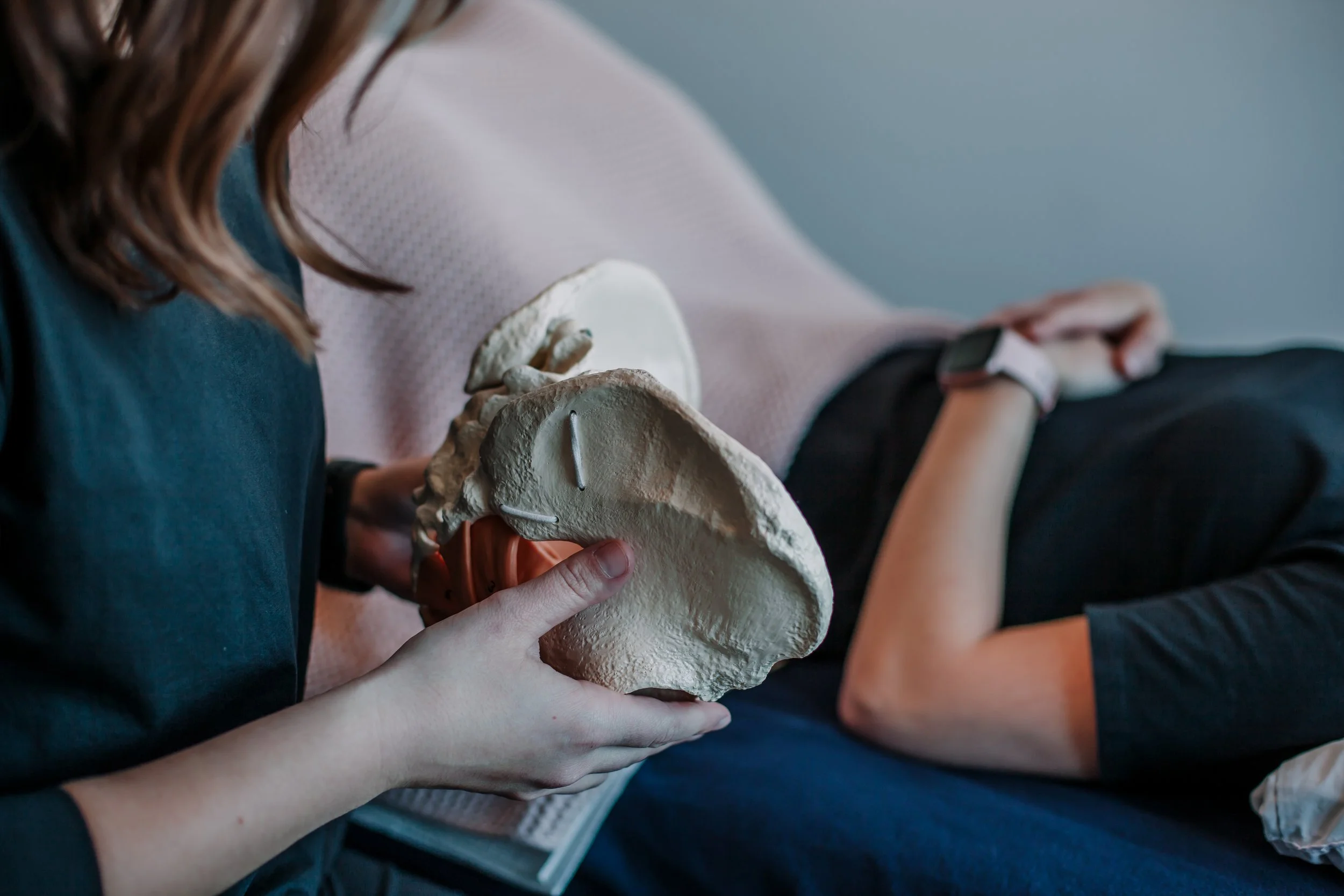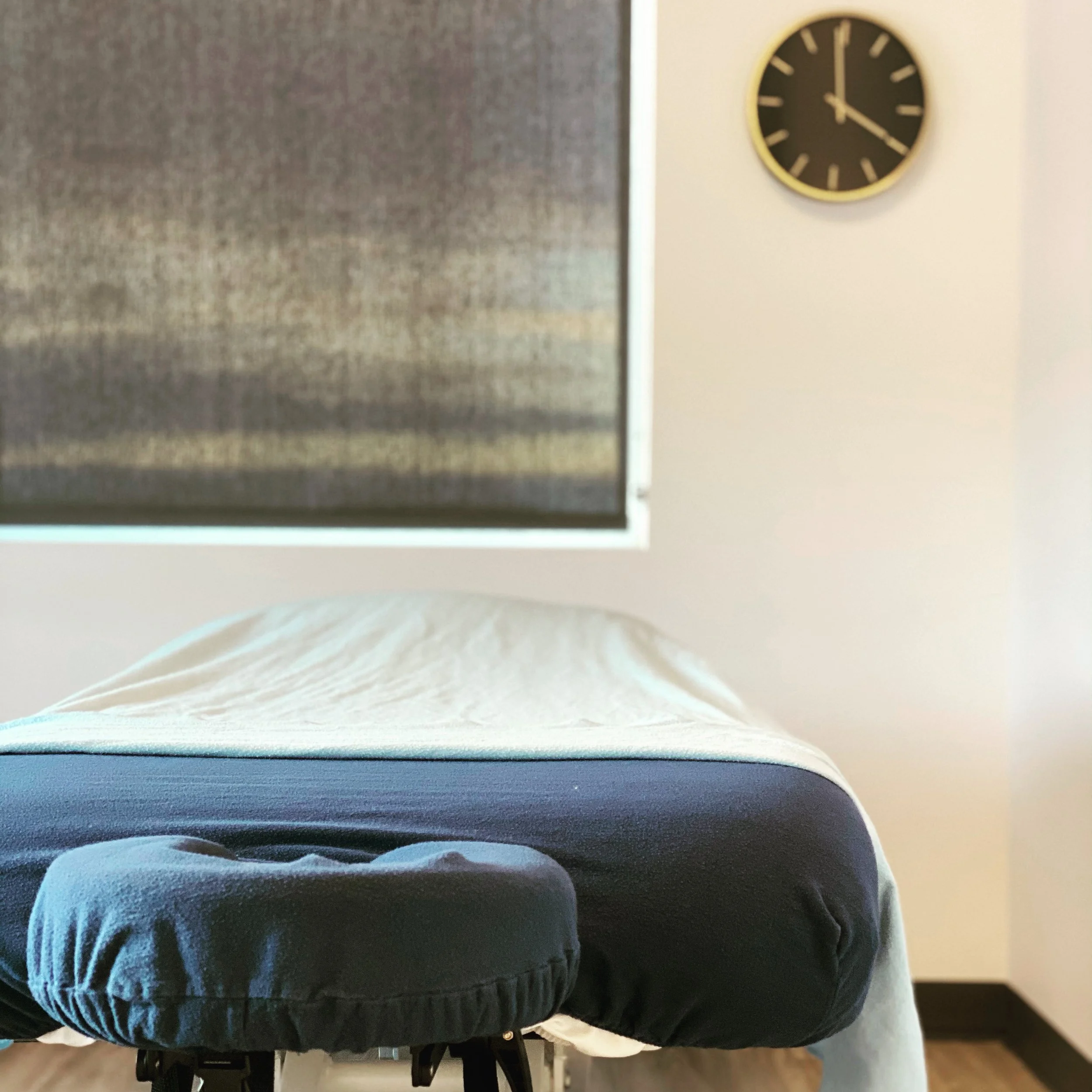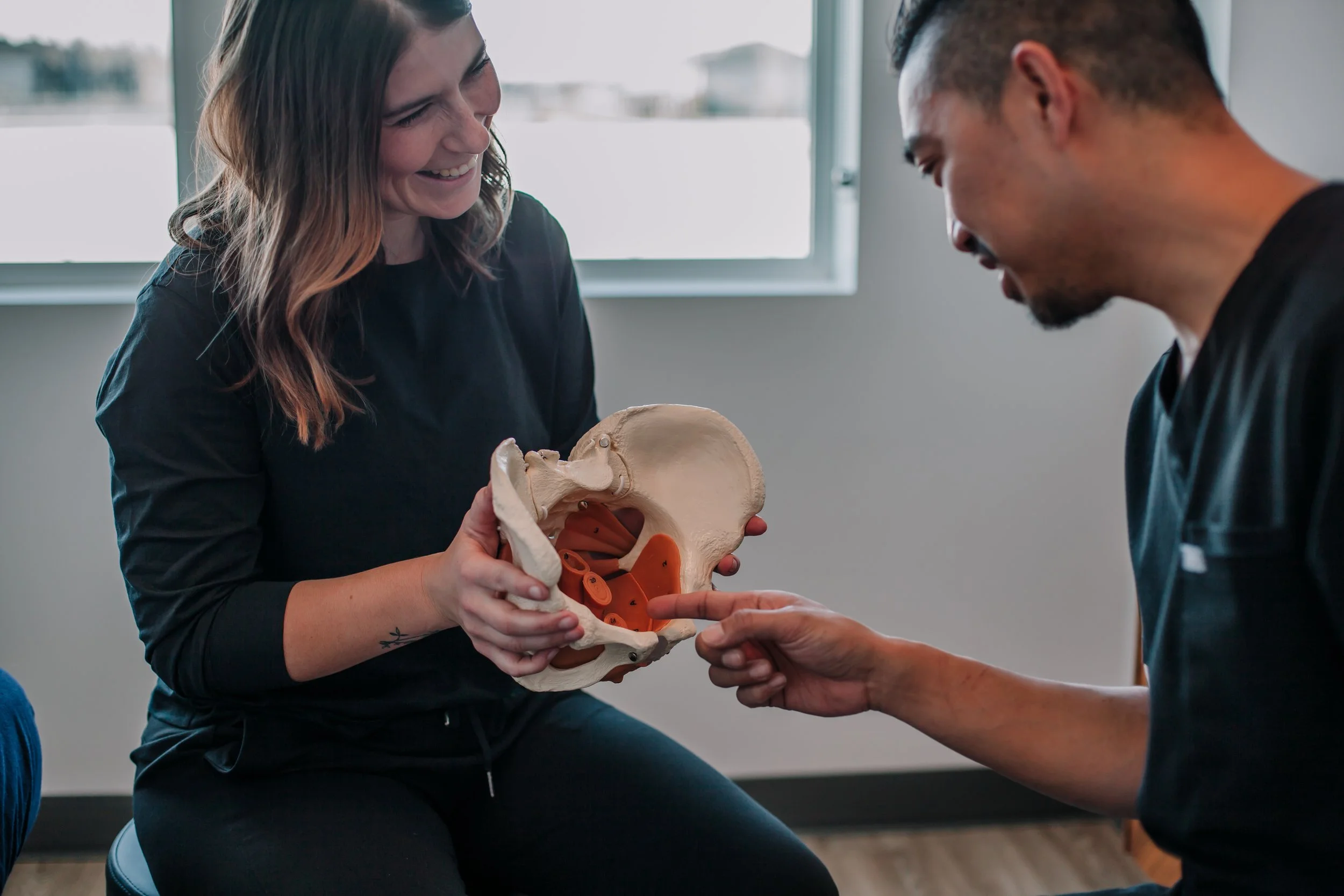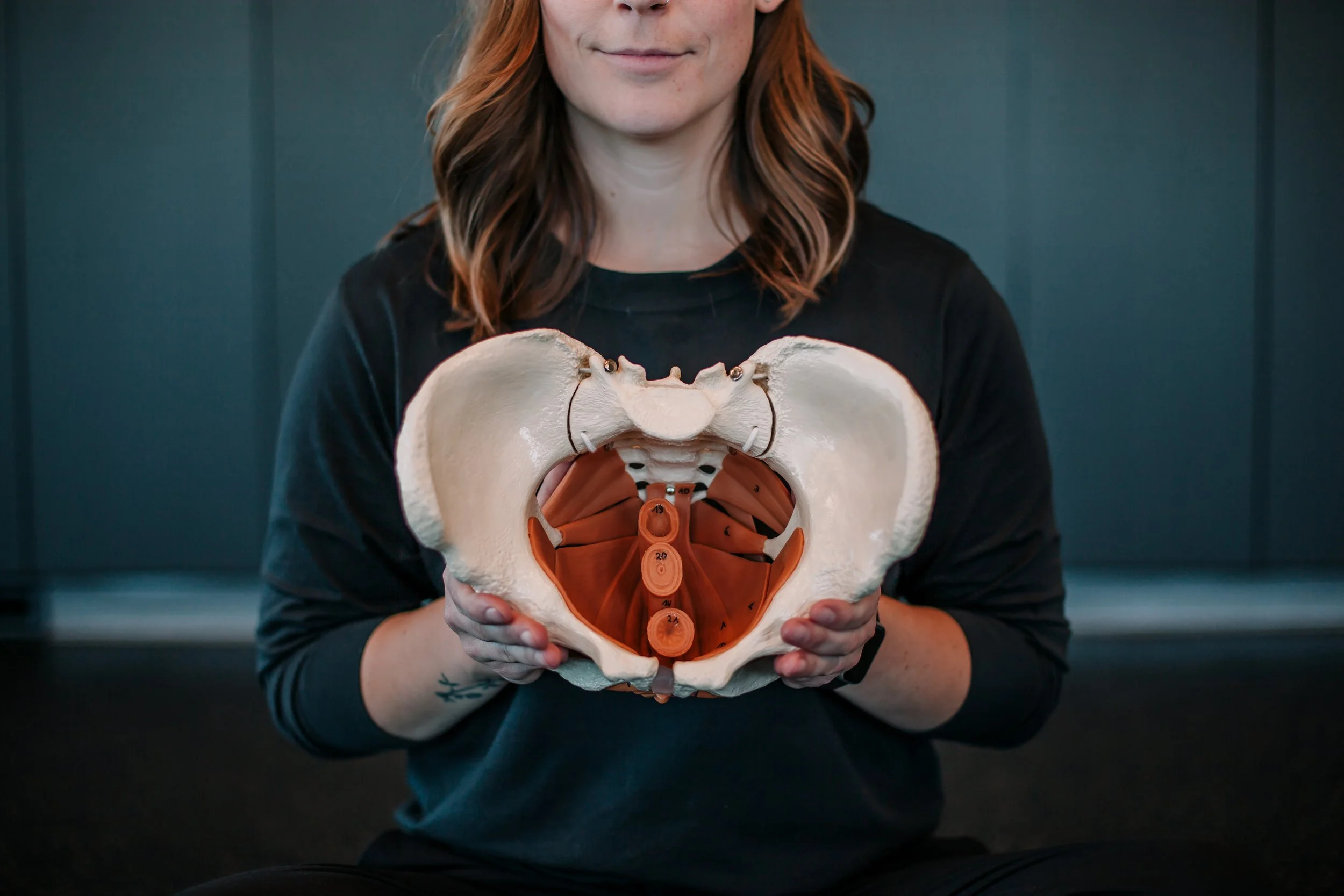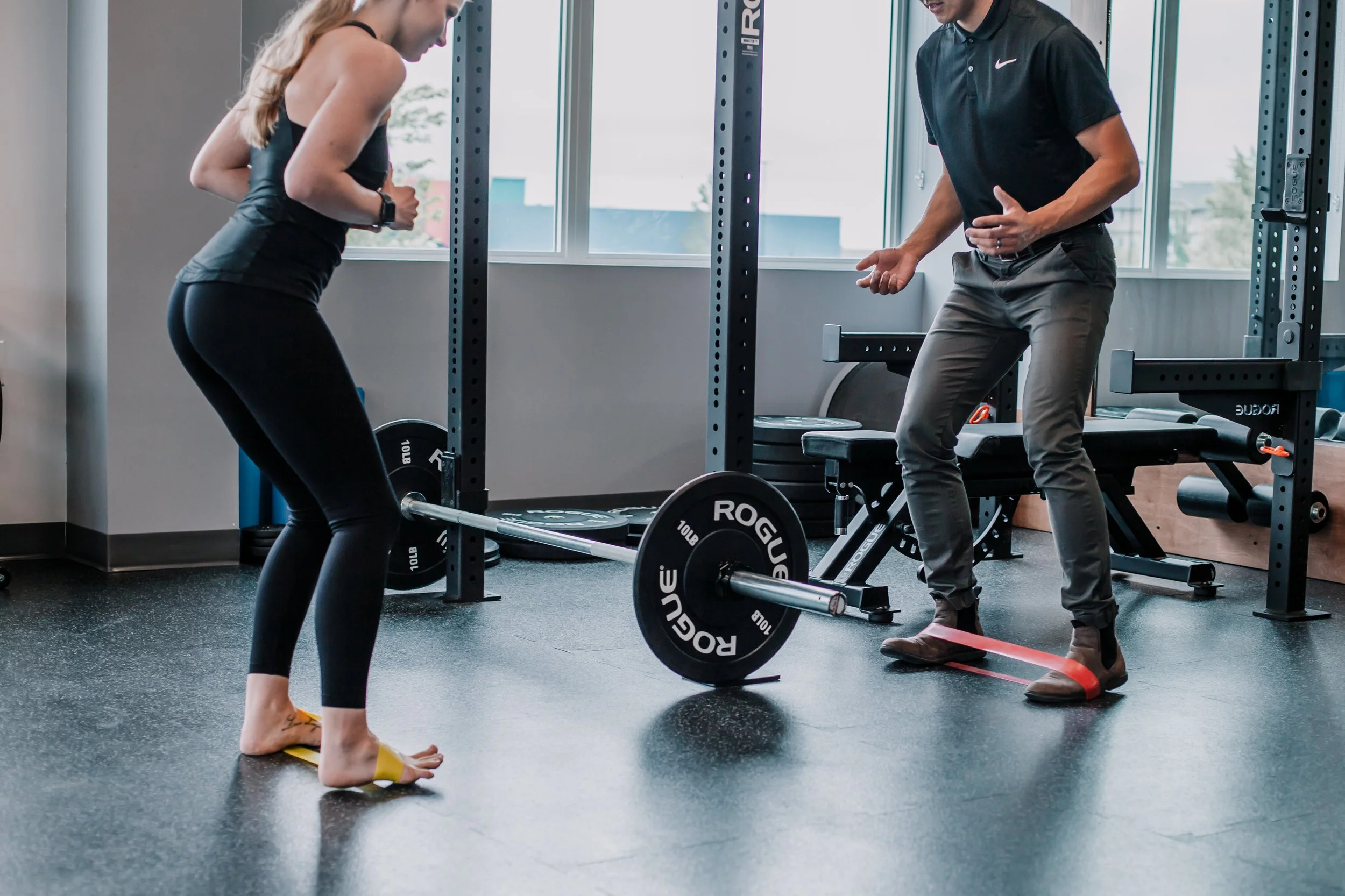
Cozy Beet Roll Casserole: A Nutrient-Dense Meal for Preconception & Beyond
Lazy Beet Roll Casserole with Creamy Dill Sauce
You’ve probably heard of cabbage rolls—but what about beet rolls? Beet leaves are one of those underrated ingredients that deserve a permanent spot in your preconception-friendly kitchen.
They’re packed with:
Folate – critical for early fetal development and reducing neural tube defects (especially important beforepregnancy).
Iron – supports ovulation, energy, and prevents anemia.
Magnesium – plays a role in hormone regulation, stress response, and blood sugar balance.
Fiber – supports digestion and helps clear excess estrogen, which can reduce PMS and promote healthy cycles.
When combined with rice (carbs for energy and hormone production), chicken (lean protein for egg quality and blood sugar support), and creamy dill sauce (healthy fats for hormone synthesis and satisfaction), this casserole checks all the boxes for a balanced, hormone-friendly meal.
Whether you’re preparing your body for pregnancy, nourishing yourself postpartum, or just looking for a nutrient-dense comfort meal, this dish is for you.
Ingredients
(amounts are approximate—adjust to taste)
1 cup uncooked rice
2 tbsp coconut oil
4–6 cups beet leaves, stems removed and chopped
1 onion, chopped
3 cloves garlic, minced
2 cooked chicken breasts, cubed or shredded
¼ cup butter
2 tbsp flour
2 cups heavy cream
½ cup fresh dill, chopped
1 tsp salt
Pepper, to taste
Instructions
Cook the Rice
Prepare rice according to package directions and set aside.Sauté the Veggies
In a large skillet, heat coconut oil over medium-low. Add chopped beet leaves and onion. Cook until wilted and soft (8–10 minutes). Stir in garlic and cook another 1–2 minutes.Mix It All Together
Add cooked rice and chicken to the skillet. Toss in fresh dill and stir.Make the Creamy Dill Sauce
In a small saucepan, melt butter over medium-low. Add flour and whisk to form a roux. Cook 1–2 minutes, then slowly whisk in cream. Cook until slightly thickened. Season with salt and pepper.Combine & Bake (Optional)
Pour cream sauce over the rice-beet leaf mixture and stir to coat.Serve as is, OR
Bake in a dish at 350°F (175°C) for 20–30 minutes, until bubbling and golden at the edges.
Serving Suggestions
Delicious on its own, or with a side of roasted veggies
Top with extra fresh dill or a squeeze of lemon for brightness
Freezes beautifully—perfect for postpartum meal prep
Why This Recipe Supports Fertility & Hormone Health
This casserole provides a nourishing balance of:
Protein for hormone production, egg quality, and blood sugar stability
Folate + Iron for healthy ovulation and preconception prep
Magnesium + Fiber for hormone balance, stress resilience, and digestion
Healthy fats to support hormone synthesis and satiety
It’s comfort food with a fertility-friendly twist.
Share Your Version
Did you make this and love it? Share your creation on Instagram and tag @bloomtherapywellness and @thepregnancyprep.rd—I’d love to see how you enjoyed it!
Fertility-Friendly Chia Pudding: A Make-Ahead Breakfast for Hormone Balance
If you’re in your preconception season—whether that’s a few months or a year before you hope to get pregnant—what you eat now matters. Your body is building the nutrient stores, hormone balance, and overall health that will carry you into a healthy pregnancy.
This chia seed pudding has become one of my go-to make-ahead breakfasts (or snacks). It’s loaded with protein, fiber, and healthy fats—all things that support balanced blood sugar, hormone production, and fertility. Plus, it tastes like dessert while giving your body the nutrients it needs when preparing for pregnancy.
If you’re in your preconception season—whether that’s a few months or a year before you hope to get pregnant—what you eat now matters. Your body is building the nutrient stores, hormone balance, and overall health that will carry you into a healthy pregnancy.
This chia seed pudding has become one of my go-to make-ahead breakfasts (or snacks). It’s loaded with protein, fiber, and healthy fats—all things that support balanced blood sugar, hormone production, and fertility. Plus, it tastes like dessert while giving your body the nutrients it needs when preparing for pregnancy.
Why This Recipe is Perfect for Preconception
This chia pudding checks so many boxes for hormone and fertility support:
☑️ Protein for hormones & egg quality – Between the Greek yogurt, cottage cheese, and collagen powder, this recipe packs ~20–25g of protein per serving. Protein supports muscle health, hormone production, and steady metabolism.
☑️ Fiber for gut & hormone balance – Chia seeds are packed with soluble fiber, supporting healthy digestion and helping your body clear excess estrogen. One serving can give you 8–10g of fiber—almost a third of your daily needs.
☑️ Healthy fats for hormone production – Chia seeds, nuts, and seeds provide omega-3s and other essential fats your body needs to build hormones.
☑️ Blood sugar balance – The combo of protein, fiber, and fat helps prevent the energy crashes that can disrupt ovulation and hormone balance.
And remember: a healthy gut = better nutrient absorption, which is crucial in the preconception window.
Recipe
Ingredients
(adjust to taste—no need for perfection here)
~½ cup chia seeds (enough to cover the bottom of your container)
½–¾ cup plain Greek yogurt
½–¾ cup cottage cheese
Splash of milk (whole milk works well)
~¼ cup collagen powder
Sprinkle of cinnamon
Splash of vanilla extract
Splash of maple syrup
Topping ideas:
Fresh fruit (nectarines, berries, banana, kiwi, pomegranate seeds)
Frozen fruit (raspberries)
Coconut flakes
Dark chocolate chips
Walnuts, almonds, or pecans
Pumpkin or sunflower seeds
Hemp hearts or flax seeds
Granola for crunch
Instructions
Add chia seeds – Place enough chia seeds in the bottom of a large container to fully cover it.
Blend the base – In a blender, mix Greek yogurt, cottage cheese, milk, collagen, cinnamon, vanilla, and maple syrup until smooth. The mixture should be slightly thick but pourable.
Combine – Pour mixture over chia seeds and stir well to coat.
Let it set – Refrigerate for at least 2 hours, or up to 3–4 days, until the chia absorbs the liquid and forms a pudding texture.
Serve & top – Scoop into bowls and add your favorite toppings.
Makes ~3–6 servings
How This Recipe Supports Your Fertility Goals
When you’re preparing for pregnancy, this chia pudding offers:
Steady energy to support ovulation and daily activity.
Balanced blood sugar to reduce hormone imbalances like high androgens or estrogen dominance.
Gut health support for better nutrient absorption and detoxification.
Key fertility nutrients like protein, calcium, fiber, and omega-3s.
And the best part? It’s make-ahead friendly—less stress about “what’s for breakfast” and more consistency with the nutrients your body needs.
SHARE YOUR VERSION
Did you make this and love it? Share your creation on Instagram and tag @bloomtherapywellness and @thepregnancyprep.rd—I’d love to see how you enjoyed it!
6 Fertility Nutrition Myths That Could Be Holding You Back (Copy)
When you’re trying to conceive, it’s easy to fall down the Google rabbit hole of “fertility foods,” “fertility diets,” or “what to eat to get pregnant fast.” Unfortunately, much of what you’ll find is based on myths that can leave you confused, stressed, or feeling like you’re not doing enough.
As a women’s health dietitian, I want to set the record straight. Let’s break down six common myths about fertility nutrition—and what’s actually true.
When you’re trying to conceive, it’s easy to fall down the Google rabbit hole of “fertility foods,” “fertility diets,” or “what to eat to get pregnant fast.” Unfortunately, much of what you’ll find is based on myths that can leave you confused, stressed, or feeling like you’re not doing enough.
As a women’s health dietitian, I want to set the record straight. Let’s break down six common myths about fertility nutrition—and what’s actually true.
1. Nutrition Can’t Influence Your Egg Health
The truth: Egg quality isn’t completely fixed. While age is a factor, nutrition and lifestyle in the 3–4 months before ovulation have a big impact. Antioxidants (from fruits, vegetables, and whole foods), omega-3 fats, and nutrients like folate, choline, and zinc all help protect egg cells from damage and support healthy development.
2. Fertility Nutrition Only Matters for Women
The truth: Men’s nutrition and lifestyle are just as important. Sperm health impacts conception, miscarriage risk, placenta development, and even pregnancy complications like morning sickness or preeclampsia. Research shows sperm quality can improve significantly within just a few months of nutrition and lifestyle changes. Fertility is a team effort—and your partner’s health matters as much as yours.
3. Your Prenatal Vitamin Covers Everything
The truth: Prenatals are helpful, but they aren’t magic pills. They’re designed to fill in the gaps, not cover your full nutritional foundation. Many common prenatals are low in choline, magnesium, or omega-3s (or missing them completely). Depending on your diet, you may need additional support beyond a prenatal to optimize fertility.
4. You Have to Cut Out Sugar, Dairy, and Red Meat to Conceive
The truth: Restriction isn’t necessary—and can even backfire. While too much added sugar can affect blood sugar balance and hormones, cutting it out completely isn’t sustainable. Dairy provides calcium, protein, and iodine, while red meat offers iron, zinc, and vitamin B12—all important for fertility. A varied, balanced diet is more effective (and less stressful) than strict elimination.
5. One Supplement or “Fertility Food” Will Get You Pregnant
The truth: Fertility is complex, and no single food, tea, or supplement can guarantee pregnancy. Conception depends on hormone balance, egg and sperm quality, blood sugar, nutrient status, sleep, stress, and overall health. Quick fixes are tempting, but long-term lifestyle habits are what truly support fertility.
6. You Don’t Need to Worry About Nutrition Until You’re Pregnant
The truth: The best time to focus on nutrition is before pregnancy. Nutrient stores like iron, folate, and choline take time to build up, and they’re crucial in the earliest weeks—often before you even know you’re pregnant. Starting now supports egg and sperm health, hormone balance, and makes for a smoother transition into pregnancy.
What to Focus on Instead
Instead of following myths or extremes, focus on a balanced foundation that supports both partners:
Eat enough protein, fiber, and healthy fats every day.
Prioritize whole foods most of the time, while still allowing flexibility.
Include a wide variety of colorful fruits and vegetables.
Support blood sugar balance with meals and snacks.
Use a prenatal to complement, not replace, a nutrient-dense diet.
Why Preconception Nutrition Matters
Nutrition in the preconception stage sets the foundation for a healthy pregnancy and baby. Working with a dietitian helps you feel confident, improve your eating habits, and build up the nutrient stores you’ll need when you do conceive.
Understanding TMJ and Jaw Pain: How Can Physiotherapy Help You Find Relief
Understanding TMJ/TMD: Causes, Symptoms, and How Physiotherapy Can Help
If you’ve ever experienced persistent jaw pain, clicking sounds when chewing, or headaches that don’t seem to go away, you might be dealing with TMJ or TMD—a common but often misunderstood condition that affects millions of people.
Understanding TMJ/TMD: Causes, Symptoms, and How Physiotherapy Can Help
If you’ve ever experienced persistent jaw pain, clicking sounds when chewing, or headaches that don’t seem to go away, you might be dealing with TMJ or TMD—a common but often misunderstood condition that affects millions of people.
What Is TMJ/TMD?
TMJ stands for temporomandibular joint—the hinge that connects your jawbone to your skull. It allows you to talk, chew, and yawn. When this joint becomes irritated or dysfunctional, it leads to a condition called temporomandibular joint disorder (TMD)
TMD can cause significant discomfort and impact your daily life. It's more common than many people realize—studies suggest that 20–30% of adults experience some form of TMD.
Common Symptoms of TMJ/TMD
Recognizing the signs early is key to effective treatment. Common symptoms include:
* Jaw pain or tenderness
* Clicking, popping, or grinding noises in the jaw
* Earaches or ringing in the ears (tinnitus)
* Pain or difficulty while chewing or speaking
* Jaw locking or limited range of motion
* Headaches, facial discomfort, and neck tension
What Causes TMJ Pain or TMD?
TMD can develop due to a variety of factors, including:
* Poor posture or prolonged neck/back tension
* Bruxism (grinding or clenching your teeth, especially at night)
* Trauma or misalignment of the jaw
* Arthritis or other degenerative joint conditions
* High stress levels, which can increase jaw tension
Understanding the root cause of your symptoms is crucial to tailoring the right treatment approach.
How Physiotherapy Can Help
Physiotherapy is one of the most effective and conservative ways to manage TMJ/TMD. A trained physiotherapist will assess your jaw, neck, and overall posture to develop a personalized treatment plan. This may include:
1. Manual Therapy
Hands-on techniques that reduce joint stiffness, release tight muscles, and improve jaw alignment.
2. Therapeutic Exercises
Targeted exercises to strengthen muscles, enhance joint mobility, and correct jaw movement patterns.
3. Postural Correction
Improving posture—especially for those who sit for long hours—can significantly reduce strain on the TMJ. Your physiotherapist will recommend ergonomic changes and posture-focused exercises.
4. Pain Management Techniques
These may involve dry needling or IMS (Intramuscular Stimulation), stress reduction strategies, and patient education to manage flare-ups and prevent recurrence.
When Should You See a Physiotherapist?
If you’re experiencing:
* Jaw pain or tightness
* Clicking or popping sounds when opening or closing your mouth
* Difficulty chewing or speaking
* Reduced ability to fully open your mouth
…it may be time to consult a physiotherapist. Early intervention can help prevent chronic issues and get you back to pain-free living sooner.
Don't ignore jaw pain—your TMJ health plays a crucial role in your overall well-being. If you're struggling with symptoms of TMD, reach out to a licensed physiotherapist for a full assessment and begin your journey toward lasting relief.
How Your Eating Habits Can Help You Have a Better Period
If your period feels like a monthly struggle—whether it’s irregular cycles, painful cramps, intense cravings, or mood swings—you’re not alone. Many women deal with frustrating period symptoms without realizing that what they eat every day can play a big role in how they feel throughout their cycle.
Your body relies on key nutrients to keep hormones balanced, support a smooth menstrual cycle, and reduce discomfort. When certain nutrients are lacking, or when blood sugar and inflammation aren’t well managed, it can contribute to period problems like:
Heavy or painful periods
Bloating and digestive issues
Mood swings and irritability
Fatigue and low energy
Cycle irregularities
The good news? Small, intentional shifts in how you nourish your body can help regulate your cycle, ease symptoms, and support overall hormone health. Let’s dive into how your eating habits can help you have a better period—one that feels more predictable, less painful, and easier to manage.
1. Blood Sugar Balance & Hormone Health
Keeping your blood sugar steady throughout the day is foundational to supporting hormone balance and can improve symptoms like mood swings, cravings, and cycle irregularities. When energy levels fluctuate too much between meals, it can put extra stress on the body and affect ovulation, PMS, and even period pain.
How to support steady energy and hormone balance:
Eat breakfast within an hour of waking and before or with any caffeine
Include protein, fiber, and healthy fats at meals and snacks to help keep energy levels stable.
Tune into your hunger cues and eat meals at regular intervals to avoid dips in energy.
Pair carbohydrates with protein or fats (like adding an egg to toast or pairing fruit with greek yogurt) to support a balanced release of energy.
2. Nutrients That Support a Healthy Cycle
Your body needs specific nutrients to regulate hormones, promote a regular cycle, and reduce PMS and cramps. If you're not getting enough of these, your period might feel more challenging.
Tip: aim to get these nutrients from food before adding supplements. Not all supplements are tolerated well or necessary for everyone. Taking supplements can also create imbalances between other nutrients so we need to be very intentional about it. Consult your healthcare provider prior to starting any new supplements.
Key nutrients for a healthy cycle:
Magnesium (avocados, dark chocolate, nuts, seeds) – Can help with muscle relaxation and ease period cramps.
Iron (beef, dark meat poultry, organ meats) – Supports energy levels, especially for those with heavier periods.
Omega-3s (salmon, walnuts, chia seeds) – May help with period discomfort and reducing inflammation.
Vitamin B6 (chicken, bananas, potatoes, sunflower seeds) – Can support mood balance and reduce PMS symptoms.
How to include them in your day:
Add a variety of colorful vegetables, animal proteins, and whole grains to meals.
Include foods rich in iron, especially during and after your period, to replenish what’s lost.
Enjoy sources of omega-3s a few times a week to support overall inflammation.
3. Reducing Inflammation to Ease Period Pain
Certain habits can contribute to increased inflammation in the body, which may make period cramps feel more intense. Including more nourishing, anti-inflammatory foods in your routine can help support a more comfortable cycle.
Ways to support a balanced inflammation response:
Include foods rich in omega-3s (like salmon, flaxseeds, and walnuts), which have been shown to support menstrual comfort.
Enjoy colorful fruits and vegetables, which contain antioxidants that help the body recover from everyday stressors.
Add herbs and spices like turmeric and ginger, which may help with bloating and period discomfort.
4. Supporting Digestion for Hormone Balance
Your gut health plays a role in how well your body processes and eliminates hormones like estrogen. If digestion is slow or out of balance, it may contribute to bloating, constipation, cycle irregularities, or more intense PMS symptoms.
How to support digestion for hormone balance:
Include fiber-rich foods like vegetables, fruit, and chia seeds to support regular digestion.
Add fermented foods like yogurt, kefir, or kimchi to help maintain gut health.
Drink plenty of water to support digestion and help with bloating.
Ensure you’re having a bowel movement once per day minimum to support hormone balance.
Take Control of Your Menstrual Health with Nutrition
Your menstrual cycle is a reflection of your overall health, and small changes in how you nourish your body can make a big difference in how you feel throughout the month.
If you’re looking for personalized support to improve your cycle, ease period symptoms, and feel more balanced, I’d love to help!
Let’s work together to create a nutrition plan that supports your hormones and helps you feel your best. Click HERE to book a consultation and start feeling more in sync with your cycle today!
Struggling with low iron in pregnancy? Here’s what to do about it
If you're pregnant and dealing with low iron levels, you're not alone. Many women are told they need iron supplements to prevent deficiency—but what if you could improve your iron levels naturally through food?
While iron is essential for carrying oxygen, supporting energy levels, and helping your baby grow, supplements often come with unpleasant side effects like nausea and constipation. The good news? With the right dietary strategies, you can optimize iron absorption and meet your needs without relying solely on supplements.
Keep reading for the best ways to boost your iron levels naturally, how to enhance absorption, and when supplements might be necessary.
How to Increase Iron Levels Naturally
Instead of jumping straight to supplements, consider boosting iron levels through food. Here are some effective strategies (attempt these in the order shown for maximal impact):
1. Prioritize Iron-Rich Foods
Best sources: Red meat (beef, venison, pork), organ meats (liver, heart, kidney), and poultry provide the most absorbable form of iron, along with other nutrients that are needed for iron metabolism.
Plant-based options: While beans, nuts, and leafy greens contain iron, iron content and absorption is much lower than animal-based sources. Focus on getting your iron from animal sources instead as this gives you the most bang for your buck!
2. Include Copper and Vitamin A rich foods
Sometimes issues with iron aren't just an iron intake issue. Copper and vitamin A are also needed to regulate iron absorption and mobilization. Good sources include beef liver, oysters, cashews, dairy, eggs, salmon, cheese, butter, canned tuna, dark chocolate, potato, cooked leafy greens, avocado, etc.
3. Pair Iron Foods with Vitamin C
Eating iron-containing foods alongside vitamin C sources (citrus fruits, bell peppers, strawberries, kiwi, cantaloupe) or acidic foods (vinegar, tomato sauce) enhances absorption.
Enjoy your steak with some roasted bell peppers, cook ground beef in tomato sauce for spaghetti, or have a small glass of orange juice on the side of your chicken caesar salad!
4. Cook with Cast Iron Pans
Cooking your foods in cast iron can increase the iron content of your meals. Adding acidic foods like tomato sauce can increase the iron content even further.
5. Keep Calcium Foods Separate from Iron
Calcium inhibits iron absorption, so avoid consuming dairy products or calcium supplements alongside iron-rich meals. If you’re trying to increase the intake of dairy to get more vitamin A and copper, just try to have your dairy at a separate meal.
Should You Take an Iron Supplement?
Iron supplements may be necessary if your blood work indicates a deficiency, but they can cause side effects like nausea, constipation, and digestive discomfort (issues that are already common in pregnancy). Additionally, excess iron from supplements can be harmful in the body, as the body has no efficient way to eliminate it and it can contribute to inflammation.
Many prenatal vitamins contain iron, so be mindful of your total intake. It’s better to get a prenatal that does not contain iron and add in a separate iron supplement if you need it. If you have tried all these things and still need an iron supplement in the end, opt for a form of iron called iron bisglycinate as it is well absorbed and tends to not bring as many uncomfortable side effects as other forms of iron.
Food based alternatives to iron supplements with less side effects that can still be as effective (and sometimes better) include freeze dried liver and organ supplements and spirulina powder or capsules.
Regardless if you need an iron supplement or not, you should still be trying to focus on optimizing your intake of iron, copper, and vitamin A rich foods since this is the superior way to get our nutrients in.
Get Personalized Support
Meeting your iron needs in pregnancy through food alone is totally possible but requires intention. As a Registered Dietitian, I can provide tailored guidance to help you optimize your iron as well as overall nutrient intake to ensure you have a healthy pregnancy.
If you're interested in working together, I offer in-person consultations at Bloom Therapy. Book an initial assessment and start working towards a better pregnancy experience.
If you’re on the fence, book a free 15-minute discovery call to see how I can support you. You can also reach me at hello@nutritionbytayler.ca or follow me on Instagram @thepregnancyprep.rd for more women’s health content. Let's ensure you're getting the nutrients you need for a healthy pregnancy!
Tayler Hruschak, BSc, RD
C-Section Recovery: How Pelvic Physiotherapy Can Help
Recovering from a cesarean section (C-section) birth involves more than just healing the surgical incision. It also requires rehabilitation of the pelvic floor and abdominal muscles to support recovery and restore function. Here's how pelvic physiotherapy can play a crucial role in post-C-section rehabilitation
Recovering from a cesarean section (C-section) birth involves more than just healing the surgical incision. It also requires rehabilitation of the pelvic floor and abdominal muscles to support recovery and restore function. Here's how pelvic physiotherapy can play a crucial role in post-C-section rehabilitation:
Understanding C-Section Recovery:
After a C-section, the abdominal muscles and pelvic floor can become weakened or dysfunctional due to the surgical procedure and changes in posture during pregnancy. Common post-C-section symptoms may include abdominal weakness, pelvic pain, urinary incontinence, and difficulty with core stability.
The Role of Pelvic Physiotherapy in C-Section Rehab:
Early Mobilization: Pelvic physiotherapists can provide guidance on safe and appropriate movement and activity levels in the early postpartum period to promote healing.
Scar Management: Pelvic physiotherapists can use manual therapy techniques to address scar tissue adhesions and improve mobility around the C-section incision site, reducing pain and discomfort.
Core and Pelvic Floor Strengthening: Pelvic physiotherapy focuses on strengthening the deep core muscles, including the transverse abdominis and pelvic floor muscles, to restore stability and function to the abdominal and pelvic regions.
Breathing and Postural Exercises: Pelvic physiotherapists can teach breathing techniques and postural exercises to optimize alignment and support the healing process, reducing strain on the abdominal muscles and pelvic floor.
Treatment for Urinary Incontinence: If urinary incontinence is a concern post-C-section, pelvic physiotherapists can provide strategies and exercises to improve bladder control and reduce leakage.
Conclusion:
Pelvic physiotherapy is a valuable resource for women recovering from a C-section birth, offering specialized care and support to promote healing, restore function, and enhance overall well-being. If you've had a C-section and are experiencing symptoms such as abdominal weakness, pelvic pain, or urinary incontinence, consider consulting with a pelvic physiotherapist for personalized rehabilitation and support on your journey to recovery.
Rectus Diastasis: Addressing Abdominal Separation with Pelvic Physio
Rectus diastasis is a common condition among pregnant and postpartum individuals where the abdominal muscles separate along the midline. Here's a brief overview of rectus diastasis and how pelvic physiotherapy can help
Rectus diastasis is a common condition among pregnant and postpartum individuals where the abdominal muscles separate along the midline. Here's a brief overview of rectus diastasis and how pelvic physiotherapy can help:
Understanding Rectus Diastasis:
Rectus diastasis occurs when the linea alba, the connective tissue between the rectus abdominis muscles, stretches and separates, resulting in a visible gap or bulge in the abdominal area. This condition is often associated with pregnancy but can also occur due to factors such as rapid weight gain, improper lifting techniques, or repetitive strain on the abdominal muscles.
Pelvic Physiotherapy for Rectus Diastasis:
Pelvic physiotherapists can play a crucial role in assessing and managing rectus diastasis through targeted interventions, including:
Core Strengthening Exercises: Pelvic physiotherapists can prescribe specific exercises to strengthen the deep core muscles, including the transverse abdominis and pelvic floor muscles, to provide support and stability to the abdominal area.
Manual Therapy Techniques: Techniques such as soft tissue mobilization and myofascial release can help improve tissue mobility and alignment, reducing tension and promoting healing of the linea alba.
Education and Lifestyle Modifications: Pelvic physiotherapists provide education on proper body mechanics, posture, and movement patterns to prevent further strain on the abdominal muscles and facilitate optimal healing of rectus diastasis.
Pelvic Floor Assessment: Pelvic physiotherapists can assess pelvic floor function and address any pelvic floor dysfunction that may be contributing to or exacerbating rectus diastasis, such as pelvic floor muscle weakness or hypertonicity.
Conclusion:
By incorporating pelvic physiotherapy into your treatment plan, you can effectively manage rectus diastasis, reduce symptoms, and promote healing of the abdominal muscles. If you're experiencing symptoms of rectus diastasis or are concerned about your abdominal health, consult with a pelvic physiotherapist for personalized care and guidance tailored to your needs.
Maintaining Pelvic Health During Pregnancy with Pelvic Physiotherapy
During pregnancy, the role of pelvic physiotherapy becomes increasingly vital in ensuring optimal pelvic health for expecting mothers. Here’s how pelvic physiotherapy can help support you during this transformative time:
During pregnancy, the role of pelvic physiotherapy becomes increasingly vital in ensuring optimal pelvic health for expecting mothers. Here’s how pelvic physiotherapy can help support you during this transformative time:
Specialized Guidance
Pelvic physiotherapists offer tailored guidance on exercises and techniques specifically designed to strengthen the pelvic floor muscles, providing support as your body undergoes significant changes.
Pain Management
Pelvic physiotherapy can address common discomforts such as pelvic girdle pain, low back pain, and pelvic floor muscle tension through manual therapy techniques and targeted exercises, promoting comfort and mobility during pregnancy.
Preparation for Labor and Delivery
Pelvic physiotherapists can provide education and guidance on optimal positioning, breathing techniques, and relaxation exercises to prepare your body for labor and delivery, facilitating a smoother childbirth experience.
Prevention of Pelvic Floor Dysfunction
By addressing pelvic floor issues early on and providing preventive strategies, pelvic physiotherapy aims to reduce the risk of pelvic floor dysfunction, such as urinary incontinence, pelvic organ prolapse, and perineal trauma during childbirth.
Postpartum Recovery
Pelvic physiotherapy plays a crucial role in postpartum recovery, assisting in the rehabilitation of pelvic floor muscles, addressing any issues that may arise after childbirth, and supporting your return to optimal pelvic health.
By incorporating pelvic physiotherapy into your prenatal care plan, you can proactively address pelvic health concerns, promote comfort and well-being during pregnancy, and lay the foundation for a smoother childbirth and postpartum recovery journey. Be sure to consult with a qualified pelvic physiotherapist who can provide personalized care based on your unique needs and goals.
Understanding Dyspareunia: Causes and Solutions
Dyspareunia refers to persistent or recurrent pain experienced during sexual intercourse. The pain can occur at the vaginal opening, deep within the pelvis, or in the genital region. Dyspareunia can affect individuals of any age, gender, or sexual orientation and may have physical, emotional, and relational consequences.
What is Dyspareunia?
Dyspareunia refers to persistent or recurrent pain experienced during sexual intercourse. The pain can occur at the vaginal opening, deep within the pelvis, or in the genital region. Dyspareunia can affect individuals of any age, gender, or sexual orientation and may have physical, emotional, and relational consequences.
Causes of Dyspareunia:
Dyspareunia can have numerous underlying causes, including:
Vaginal Dryness: Insufficient lubrication can lead to friction and discomfort during intercourse, especially in menopausal or breastfeeding individuals.
Pelvic Floor Dysfunction: Conditions such as pelvic floor muscle tension can contribute to pain during intercourse.
Infections or Inflammation: Conditions such as yeast infections, urinary tract infections, or sexually transmitted infections (STIs) can cause pain during intercourse.
Medical Conditions: Certain medical conditions, such as endometriosis, pelvic inflammatory disease, or vulvodynia, can result in dyspareunia.
Emotional Factors: Stress, anxiety, past trauma, or relationship issues can also contribute to pain during intercourse.
Solutions for Dyspareunia:
Finding relief from dyspareunia often involves addressing the underlying cause. Some potential solutions include:
Using Lubricants: Water-based or silicone-based lubricants can help reduce friction and discomfort during intercourse, particularly in cases of vaginal dryness.
Pelvic Floor Physiotherapy: Pelvic floor physiotherapy can help address pelvic floor muscle dysfunction, tension, or weakness, which may be contributing to dyspareunia.
Treating Infections or Inflammation: Treating underlying infections or inflammation with medications prescribed by a healthcare provider can help alleviate pain during intercourse.
Managing Medical Conditions: Managing underlying medical conditions, such as endometriosis or vulvodynia, through medication, lifestyle modifications, or other treatments can help reduce dyspareunia symptoms.
Addressing Emotional Factors: Seeking support from a therapist or counselor to address emotional factors such as stress, anxiety, or past trauma can be beneficial in managing dyspareunia.
Conclusion:
Dyspareunia can significantly impact sexual health, but it is a treatable condition with various causes and solutions. If you're experiencing pain or discomfort during intercourse, it's essential to speak with a healthcare provider or pelvic physiotherapist to explore potential treatment options.
Understanding Pelvic Organ Prolapse: Causes and Management
Urinary urgency and urge incontinence are common bladder control issues that can significantly impact a person's daily life and confidence. Understanding the causes and available solutions for these conditions is essential for effectively managing symptoms and improving quality of life. In this blog post, we'll explore what urinary urgency and urge incontinence are and discuss some strategies for addressing them.
Pelvic organ prolapse is a common condition that affects many individuals, particularly women who have given birth or gone through menopause. Despite its prevalence, pelvic organ prolapse can be a source of discomfort and embarrassment for those experiencing it. In this blog post, we'll provide a brief overview of pelvic organ prolapse, including its causes and management options.
What is Pelvic Organ Prolapse?
Pelvic organ prolapse occurs when one or more pelvic organs, such as the bladder, uterus, or rectum, descend or bulge into the vaginal canal due to weakened or stretched pelvic floor muscles and connective tissues. This can lead to symptoms such as a feeling of pressure or fullness in the pelvic area, urinary or fecal incontinence, discomfort during sexual intercourse, and difficulty emptying the bladder or bowel.
Causes of Pelvic Organ Prolapse:
Several factors can contribute to the development of pelvic organ prolapse, including:
Childbirth: The stretching and weakening of pelvic floor muscles during childbirth, particularly with prolonged labor or multiple vaginal deliveries, can increase the risk of pelvic organ prolapse.
Menopause: The hormonal changes associated with menopause can lead to a decrease in collagen and muscle tone, making pelvic organs more susceptible to prolapse.
Chronic Constipation: Straining during bowel movements due to chronic constipation can put pressure on the pelvic floor and contribute to pelvic organ prolapse.
Obesity: Excess weight can place additional strain on the pelvic floor muscles and increase the risk of pelvic organ prolapse.
Management of Pelvic Organ Prolapse:
Treatment options for pelvic organ prolapse depend on the severity of symptoms and the impact on an individual's quality of life. Some management strategies include:
Pelvic Floor Exercises: Strengthening the pelvic floor muscles through exercises such as Kegels can help provide support to the pelvic organs and alleviate symptoms of pelvic organ prolapse.
Lifestyle Modifications: Maintaining a healthy weight, avoiding heavy lifting or straining, and managing chronic constipation can help prevent worsening of pelvic organ prolapse symptoms.
Pelvic Organ Pessaries: A pelvic organ pessary is a removable device inserted into the vagina to provide support to the prolapsed organs and alleviate symptoms.
Surgery: In severe cases of pelvic organ prolapse or when conservative treatments are ineffective, surgical intervention may be necessary to repair or support the pelvic organs and restore normal anatomy.
Conclusion:
Pelvic organ prolapse is a common condition that can have a significant impact on quality of life. By understanding the causes and management options for pelvic organ prolapse, individuals can take proactive steps to alleviate symptoms and improve pelvic health. If you're experiencing symptoms of pelvic organ prolapse, it's essential to speak with a healthcare provider or pelvic health specialist to explore treatment options tailored to your needs. With the right approach, pelvic organ prolapse can be effectively managed, allowing individuals to live comfortably and confidently.
Understanding Urinary Urgency and Urge Incontinence: Causes and Solutions
Urinary urgency and urge incontinence are common bladder control issues that can significantly impact a person's daily life and confidence. Understanding the causes and available solutions for these conditions is essential for effectively managing symptoms and improving quality of life. In this blog post, we'll explore what urinary urgency and urge incontinence are, and discuss some strategies for addressing them.
Urinary urgency and urge incontinence are common bladder control issues that can significantly impact a person's daily life and confidence. Understanding the causes and available solutions for these conditions is essential for effectively managing symptoms and improving quality of life. In this blog post, we'll explore what urinary urgency and urge incontinence are, and discuss some strategies for addressing them.
What are Urinary Urgency and Urge Incontinence?
Urinary urgency refers to a sudden and intense urge to urinate that is difficult to control. It often occurs unexpectedly and can be accompanied by leakage of urine, known as urge incontinence. Urinary urgency and urge incontinence can be triggered by various factors, including certain foods and beverages, medications, urinary tract infections, neurological conditions, and bladder irritation.
Strategies for Managing Urinary Urgency and Urge Incontinence:
Bladder Retraining: Bladder retraining involves gradually increasing the time between bathroom visits to help train the bladder to hold urine for longer periods. This may include scheduled voiding and relaxation techniques to delay the urge to urinate.
Pelvic Floor Exercises: Pelvic floor muscle exercises, such as Kegels, can help strengthen the muscles that control bladder function and improve bladder control. Regular practice of pelvic floor exercises can reduce urinary urgency and urge incontinence symptoms over time.
Lifestyle Modifications: Making changes to your diet and lifestyle can help reduce urinary urgency and urge incontinence symptoms. Avoiding bladder irritants such as caffeine, alcohol, and spicy foods, maintaining a healthy weight, staying hydrated, and practicing stress management techniques can all contribute to better bladder control.
Medications: In some cases, medications may be prescribed to help relax the bladder muscles and reduce urinary urgency and urge incontinence symptoms. These medications target the nerves and muscles involved in bladder function.
Conclusion:
Urinary urgency and urge incontinence can be challenging to manage, but there are effective strategies and treatments available to help individuals regain control over their bladder function. If you're struggling with urinary urgency or urge incontinence, don't hesitate to speak with a healthcare provider or pelvic health specialist to explore treatment options tailored to your needs.
Understanding Stress Urinary Incontinence and Effective Treatments
Stress urinary incontinence (SUI) is a common condition characterized by the unintentional leakage of urine during physical activities that put pressure on the bladder, such as coughing, sneezing, laughing, or exercising. While SUI can significantly impact a person's quality of life, there are effective treatments available to manage and alleviate symptoms. In this blog post, we'll explore what stress urinary incontinence is and discuss some of the treatment options.
Stress urinary incontinence (SUI) is a common condition characterized by the unintentional leakage of urine during physical activities that put pressure on the bladder, such as coughing, sneezing, laughing, or exercising. While SUI can significantly impact a person's quality of life, there are effective treatments available to manage and alleviate symptoms. In this blog post, we'll explore what stress urinary incontinence is and discuss some of the treatment options.
Understanding Stress Urinary Incontinence:
Stress urinary incontinence occurs when the muscles and tissues that support the bladder and urethra become weakened, leading to leakage of urine during activities that increase abdominal pressure. Common causes of SUI include childbirth, menopause, pelvic surgery, obesity, and aging. Symptoms of SUI may vary in severity, ranging from occasional leaks to more frequent and significant episodes of urine leakage.
Treatment Options for Stress Urinary Incontinence:
Pelvic Floor Exercises: Pelvic floor muscle exercise, are often recommended as a first-line treatment for SUI. These exercises involve contracting and relaxing the pelvic floor muscles to improve strength and control. A pelvic health physiotherapist can provide guidance on how to perform Kegels correctly and develop a personalized exercise program.
Lifestyle Modifications: Making lifestyle changes can help manage symptoms of SUI. This may include maintaining a healthy weight, avoiding foods and beverages that irritate the bladder (such as caffeine and alcohol), quitting smoking, and managing chronic coughing.
Bladder Training: Bladder training involves scheduling regular trips to the bathroom to empty the bladder, gradually increasing the time between voids. This can help retrain the bladder to hold urine for longer periods and reduce urgency and frequency.
Pelvic Floor Devices: Pelvic floor devices, such as vaginal cones or weights, can be used to help strengthen the pelvic floor muscles. These devices are inserted into the vagina and require the user to perform pelvic floor exercises to hold them in place.
Medical Intervention: In cases where conservative treatments are not effective, medical interventions may be considered. These may include medications to improve bladder function, injections of bulking agents to support the urethra, or surgical procedures to provide additional support to the bladder and urethra.
Conclusion:
Stress urinary incontinence can have a significant impact on daily life, but effective treatments are available to manage symptoms and improve quality of life. Whether it's through pelvic floor exercises, lifestyle modifications, or medical interventions, individuals with SUI have options for finding relief. If you're experiencing symptoms of SUI, don't hesitate to speak with a healthcare provider or pelvic health specialist to explore treatment options tailored to your needs. With the right approach, you can regain control and live confidently without the worry of urine leakage.
The Benefits of Pelvic Physiotherapy for Men
When we hear about pelvic physiotherapy, the common assumption is that it's primarily for women. However, pelvic floor dysfunction can affect men as well, and pelvic physiotherapy offers numerous benefits for addressing these issues. In this blog post, we'll explore the importance of pelvic physiotherapy for men and how it can improve their overall health and quality of life.
When we hear about pelvic physiotherapy, the common assumption is that it's primarily for women. However, pelvic floor dysfunction can affect men as well, and pelvic physiotherapy offers numerous benefits for addressing these issues. In this blog post, we'll explore the importance of pelvic physiotherapy for men and how it can improve their overall health and quality of life.
Understanding Pelvic Floor Dysfunction in Men:
Pelvic floor dysfunction in men can manifest in various ways, including:
Urinary Incontinence: This can occur as a result of prostate surgery, neurological conditions, or pelvic floor muscle weakness.
Erectile Dysfunction: Pelvic floor muscle dysfunction can contribute to difficulties achieving or maintaining an erection.
Chronic Pelvic Pain: Conditions such as chronic prostatitis or pelvic floor tension myalgia can cause persistent pelvic pain in men.
Pelvic Organ Prolapse: While less common in men, pelvic organ prolapse can occur due to weakened pelvic floor muscles.
The Role of Pelvic Physiotherapy for Men:
Pelvic physiotherapy for men involves specialized assessment and treatment techniques aimed at addressing pelvic floor dysfunction. Some key aspects of pelvic physiotherapy for men include:
Comprehensive Assessment: A pelvic physiotherapist will conduct a thorough assessment to evaluate pelvic floor muscle function, strength, and coordination. This may involve internal palpation of the pelvic floor muscles to assess for tension, tenderness, or trigger points.
Tailored Treatment Plans: Based on the assessment findings, a personalized treatment plan will be developed to target specific pelvic floor issues. Treatment may include a combination of pelvic floor exercises, manual therapy techniques, and lifestyle modifications.
Pelvic Floor Exercises: These exercises involve contracting and relaxing the pelvic floor muscles to improve strength, endurance, and coordination.
Manual Therapy Techniques: Pelvic physiotherapists may use manual therapy techniques such as trigger point release, and internal release to address pelvic floor muscle tension and dysfunction.
Education and Lifestyle Modifications: Pelvic physiotherapists provide education on pelvic anatomy, bladder and bowel habits, posture, and breathing techniques to support pelvic floor health.
Benefits of Pelvic Physiotherapy for Men:
Improved Bladder and Bowel Control: Pelvic physiotherapy can help men regain control over bladder and bowel function, reducing symptoms of urinary incontinence and bowel dysfunction.
Enhanced Sexual Function: By addressing pelvic floor muscle dysfunction, pelvic physiotherapy can improve erectile function and sexual satisfaction in men.
Reduced Pelvic Pain: Pelvic physiotherapy techniques can help alleviate pelvic pain and discomfort, improving overall quality of life.
Prevention of Pelvic Organ Prolapse: Pelvic floor exercises and lifestyle modifications can help strengthen the pelvic floor muscles and reduce the risk of pelvic organ prolapse.
In conclusion, pelvic physiotherapy is not just for women; it offers valuable benefits for men dealing with pelvic floor dysfunction. By seeking help from a pelvic physiotherapist, men can address issues such as urinary incontinence, erectile dysfunction, chronic pelvic pain, and pelvic organ prolapse, ultimately improving their pelvic health and overall well-being.
Beyond Kegels: Pelvic Floor Physio Treatment
Pelvic floor physiotherapy is a specialized branch of physiotherapy that focuses on the assessment and treatment of pelvic floor dysfunction. While Kegel exercises are commonly associated with pelvic floor health, there are many other effective exercises and treatment modalities that pelvic floor physiotherapists utilize to address a wide range of pelvic floor issues. In this blog post, we'll explore some of these exercises and treatments, offering a comprehensive view of pelvic floor physiotherapy beyond Kegels.
Pelvic floor physiotherapy is a specialized branch of physiotherapy that focuses on the assessment and treatment of pelvic floor dysfunction. While Kegel exercises are commonly associated with pelvic floor health, there are many other effective exercises and treatment modalities that pelvic floor physiotherapists utilize to address a wide range of pelvic floor issues. In this blog post, we'll explore some of these exercises and treatments, offering a comprehensive view of pelvic floor physiotherapy beyond Kegels.
1. Pelvic Floor Relaxation Techniques:
In cases of pelvic floor hypertonicity or tightness, relaxation techniques can be highly beneficial. These techniques focus on teaching individuals how to release and relax tense pelvic floor muscles. Common relaxation techniques include diaphragmatic breathing, progressive muscle relaxation, and visualization exercises. By learning to relax the pelvic floor muscles, individuals can alleviate symptoms such as pelvic pain, urinary urgency, and constipation.
2. Pelvic Floor Strengthening Exercises:
While Kegel exercises primarily target the pelvic floor muscles, there are other exercises that can help strengthen the pelvic floor and surrounding muscles. Examples include:
Bridge Exercise: Lie on your back with knees bent and feet flat on the floor. Lift your hips off the ground, engaging your glutes and pelvic floor muscles. Hold for a few seconds, then lower back down. Repeat for several repetitions.
Squats: Stand with feet shoulder-width apart and lower into a squat position, keeping your back straight and knees aligned with your toes. As you rise back up, engage your pelvic floor muscles. Repeat for several repetitions.
Inner Thigh Squeeze: Sit on a chair with a small ball or pillow between your knees. Squeeze the ball or pillow with your inner thighs while engaging your pelvic floor muscles. Hold for a few seconds, then release. Repeat for several repetitions.
3. Manual Therapy Techniques:
Pelvic floor physiotherapists may also use manual therapy techniques to address pelvic floor dysfunction. These techniques may include:
Internal Manual Therapy: This involves the insertion of a gloved, lubricated finger into the vagina or rectum to assess and treat pelvic floor muscle tightness, trigger points, or scar tissue..
Trigger Point Release: Pressure is applied to trigger points or areas of muscular tension to alleviate pain and improve muscle function.
4. Biofeedback and Electrical Stimulation:
Biofeedback and electrical stimulation are non-invasive techniques that can help individuals improve pelvic floor muscle awareness and coordination. Biofeedback involves using sensors to provide real-time feedback on pelvic floor muscle activity, helping individuals learn to control and coordinate these muscles effectively. Electrical stimulation uses mild electrical impulses to stimulate the pelvic floor muscles, promoting muscle activation and strengthening.
In conclusion, pelvic floor physiotherapy offers a wide range of exercises and treatments beyond Kegels to address pelvic floor dysfunction effectively. Whether you're dealing with pelvic pain, urinary incontinence, or pelvic organ prolapse, a pelvic floor physiotherapist can work with you to develop a personalized treatment plan that meets your unique needs and goals. By incorporating a variety of exercises and treatments, pelvic floor physiotherapy can help individuals achieve optimal pelvic health and improve their quality of life.
Understanding the Pelvic Floor: Roles and Anatomy
The pelvic floor is a vital yet often overlooked part of the body, playing crucial roles in various functions such as supporting pelvic organs, controlling bowel and bladder movements, and contributing to sexual function. Despite its importance, many people are unfamiliar with the anatomy and functions of the pelvic floor. Let's delve into the pelvic floor's anatomy and its role in pelvic health.
The pelvic floor is a vital yet often overlooked part of the body, playing crucial roles in various functions such as supporting pelvic organs, controlling bowel and bladder movements, and contributing to sexual function. Despite its importance, many people are unfamiliar with the anatomy and functions of the pelvic floor. In this blog post, we'll delve into the pelvic floor's anatomy and its roles in maintaining pelvic health.
Anatomy of the Pelvic Floor:
The pelvic floor is a group of muscles and connective tissues that form a supportive hammock-like structure at the base of the pelvis. It consists of layers, each with its own unique function:
Superficial Layer: Contributes to sexual function and anchors the deeper muscles, and external anal sphincter
Intermediate Layer: The intermediate layer consists of the urogenital diaphragm, which supports the urethra and vagina in females and the urethra in males.
Deep Layer: The deepest layer of the pelvic floor includes the levator ani muscles, which provide structural support to the pelvic organs and help maintain continence.
Roles of the Pelvic Floor:
Supporting Pelvic Organs: One of the primary functions of the pelvic floor is to support the pelvic organs, including the bladder, uterus (in females), and rectum. These organs rest on the pelvic floor muscles, which help prevent them from descending or prolapsing into the vaginal or rectal canal.
Controlling Bowel and Bladder Movements: The pelvic floor muscles play a crucial role in maintaining bowel and bladder continence. These muscles relax to allow for the passage of urine and stool and contract to prevent leakage or incontinence.
Stabilizing the Core: The pelvic floor is an integral part of the core musculature, working in conjunction with the deep abdominal muscles, back muscles, and diaphragm to provide stability and support to the spine and pelvis.
Contributing to Sexual Function: The pelvic floor muscles are involved in sexual function and pleasure for both men and women. In females, these muscles help support the uterus and vaginal canal, while in males, they play a role in erectile function and ejaculation.
In conclusion, understanding the anatomy and roles of the pelvic floor is essential for maintaining overall health and well-being. By acknowledging the significance of the pelvic floor in supporting pelvic organs, controlling bowel and bladder movements, stabilizing the core, and contributing to sexual function, individuals can appreciate the importance of pelvic floor health in their daily lives.
Debunking Common Myths About Pelvic Health
Pelvic health is an essential aspect of overall well-being, yet it's often surrounded by misconceptions and myths that can lead to misunderstanding and unnecessary anxiety. As pelvic physiotherapists, it's crucial for us to address these misconceptions and provide accurate information to empower individuals to take control of their pelvic health. In this blog post, we'll debunk some of the most common myths about pelvic health.
Pelvic health is an essential aspect of overall well-being, yet it's often surrounded by misconceptions and myths that can lead to misunderstanding and unnecessary anxiety. As pelvic physiotherapists, it's crucial for us to address these misconceptions and provide accurate information to empower individuals to take control of their pelvic health. In this blog post, we'll debunk some of the most common myths about pelvic health.
Myth 1: Pelvic floor issues only affect women.
Fact: While it's true that women are more commonly affected by pelvic floor disorders such as urinary incontinence and pelvic organ prolapse, men can also experience pelvic floor dysfunction. Conditions like chronic prostatitis and erectile dysfunction can be related to pelvic floor muscle dysfunction in men. Therefore, both men and women should be aware of their pelvic health and seek appropriate care if needed.
Myth 2: Pelvic floor exercises are only for women who have given birth.
Fact: Pelvic floor exercises can help strengthen the pelvic floor muscles, improve bladder and bowel control, and enhance sexual function. Women who have not given birth can still experience pelvic floor dysfunction. Men can also benefit from pelvic floor exercises to address issues like erectile dysfunction and chronic pelvic pain.
Myth 3: Pelvic pain is normal and something you have to live with.
Fact: While pelvic pain is common, especially among women, it is not normal, and it shouldn't be ignored. Chronic pelvic pain can be a sign of underlying conditions such as endometriosis, pelvic inflammatory disease, or pelvic floor dysfunction. Seeking help from a pelvic health physiotherapist can assist in management of symptoms.
Myth 4: Surgery is the only option for pelvic organ prolapse.
Fact: Surgery is one treatment option for pelvic organ prolapse, but it's not the only one. Pelvic floor physiotherapy, including pelvic floor exercises, lifestyle modifications, and pessary use, can also be effective in managing pelvic organ prolapse, especially in mild to moderate cases. Surgery should be considered only after conservative treatments have been explored and failed to provide adequate relief.
Myth 5: You don't need to see a pelvic health physiotherapist unless you have a specific problem.
Fact: Just like you see a dentist for regular dental check-ups, it's essential to prioritize your pelvic health by seeing a pelvic health physiotherapist for preventive care and maintenance. Pelvic health physiotherapists can assess your pelvic floor function, provide personalized exercise programs, and offer guidance on lifestyle modifications to prevent pelvic floor issues from developing or worsening over time. It is also a great idea to visit a pelvic health physiotherapist if you are planning for pregnancy or are currently pregnant.
In conclusion, understanding the facts about pelvic health is crucial for maintaining overall well-being. By debunking common myths and misconceptions, we can empower individuals to take proactive steps towards optimizing their pelvic health. If you have any concerns about your pelvic health, don't hesitate to reach out to a pelvic health physiotherapist for guidance and support.
Running Strong: The Crucial Role of Physiotherapy for Runners
Whether you're a seasoned marathoner or a casual jogger, the exhilaration of pounding the pavement is unmatched. However, the repetitive impact of running can take a toll on your body, leading to a myriad of issues ranging from minor discomfort to serious injuries. This is where physiotherapy becomes a runner's best ally, playing a pivotal role in preventing injuries, enhancing performance, and ensuring a long and healthy running journey.
Whether you're a seasoned marathoner or a casual jogger, the exhilaration of pounding the pavement is unmatched. However, the repetitive impact of running can take a toll on your body, leading to a myriad of issues ranging from minor discomfort to serious injuries. This is where physiotherapy becomes a runner's best ally, playing a pivotal role in preventing injuries, enhancing performance, and ensuring a long and healthy running journey.
Injury Prevention: One of the primary benefits of physiotherapy for runners is injury prevention. Physiotherapists assess your biomechanics, gait, and muscle imbalances to identify potential issues before they escalate. By addressing weaknesses and imbalances through targeted exercises and stretching, physiotherapy helps runners correct their form and reduce the risk of common injuries like shin splints, stress fractures, and IT band syndrome.
Customized Rehabilitation Programs: In the unfortunate event of an injury, physiotherapy plays a crucial role in the rehabilitation process. Physiotherapists develop personalized treatment plans to accelerate healing, restore mobility, and strengthen weakened muscles. This tailored approach ensures that runners can return to the road with confidence, minimizing the risk of recurrent injuries.
Optimizing Performance: Beyond injury prevention and rehabilitation, physiotherapy contributes to optimizing running performance. By focusing on strength, flexibility, and mobility, physiotherapists help runners improve their overall fitness and efficiency. Enhanced muscle function and joint mobility translate into better running mechanics, enabling runners to cover more ground with less effort.
Pain Management: Runners often experience aches and pains, especially as mileage increases. Physiotherapy offers effective pain management strategies, combining hands-on techniques with therapeutic exercises. This not only alleviates immediate discomfort but also addresses the root causes, ensuring long-term relief and a more enjoyable running experience.
In the dynamic world of running, physiotherapy emerges as a cornerstone for longevity and success. Whether you're aiming for a personal best or simply enjoying the therapeutic benefits of running, incorporating physiotherapy into your routine is a proactive step toward a healthier, injury-free journey. By partnering with a physiotherapist, runners can unlock their full potential, running stronger, faster, and with greater resilience. Remember, it's not just about the miles you run but how well you take care of the body that propels you forward. Prioritize physiotherapy, and let every step be a testament to your commitment to a lifelong running passion.
What is Pelvic Floor Therapy?
Have you ever dealt with the troubling issue of not being able to control your bladder? Have you ever thought about finding relief from pain during sex or using a tampon? Maybe you have been diagnosed with a condition where organs in your pelvis drop, causing a lot of symptoms, but you aren't a candidate for surgery. Don't worry, because there is hope. Pelvic floor therapy is a form of rehab that can help with these problems and more, offering a real treatment option for those who don't seem to have any other options. See how our team at Bloom Therapy can help.
Have you ever dealt with the troubling issue of not being able to control your bladder? Have you ever thought about finding relief from pain during sex or using a tampon? Maybe you have been diagnosed with a condition where organs in your pelvis drop, causing a lot of symptoms, but you aren't a candidate for surgery. Don't worry, because there is hope. Pelvic floor therapy is a form of rehab that can help with these problems and more, offering a real treatment option for those who don't seem to have any other options.
Still not clear? Let’s back it up a step.
Pelvic floor therapy is a branch of Physiotherapy that is offered by a physiotherapist who has completed the necessary education to assess, diagnosis and treat pelvic floor conditions and disorders. Not every physiotherapist is a pelvic therapist but every pelvic therapist is a certified physiotherapist.
The awareness around this area of practice has been steadily increasing as a greater number of women and men seek alternative care for their pelvic health concerns.
Pelvic therapy is a specialized form of therapy that focuses on addressing various pelvic concerns, such as incontinence, prolapse, and pain during sex. However, it is important to note that pelvic therapy can also be beneficial for individuals experiencing chronic back or hip pain that has not responded well to traditional physiotherapy methods. Pelvic physiotherapists are often knowledgeable about pregnancy-related conditions like rectus diastasis and pelvic girdle pain as well. The scope of pelvic floor therapy extends beyond these examples, so if you're unsure whether pelvic therapy is right for you, I recommend scheduling a discovery call with a pelvic therapist of your choice. This will help you determine if pelvic therapy is the appropriate fit for your specific needs.
So what can you expect in pelvic floor therapy treatment?
At Bloom Therapy, we understand the importance of clear communication and setting expectations with our clients. When it comes to the assessment and treatment of pelvic floor conditions, we prioritize a thorough understanding of the condition as a whole. Our skilled therapists have specialized knowledge surrounding pelvic floor conditions and utilize a systemic/whole body assessment approach to identify the underlying factors contributing to the issue. This approach allows us to determine the driving cause and develop a targeted treatment plan.
During the assessment process, an internal examination may be performed to determine if the pelvic floor muscles are involved in the problem. We want to assure our clients that this examination is not always required and can be opted out of at any time, based on their level of comfort. We value your autonomy and respect your boundaries.
Following the evaluation, our therapists will provide treatment and develop a home exercise program based on the findings and the individualized treatment plan. This comprehensive approach ensures that our clients receive the most effective and personalized care possible.
At Bloom Therapy, we prioritize transparency and empowering our clients to make informed decisions about their treatment. We believe in open communication and will always provide clear explanations, answer any questions, and address any concerns our clients may have. Together, we will work towards achieving the best possible outcomes and improving overall well-being.
Bottom line?
If you are struggling with pelvic floor concerns, pelvic therapy should be considered as a first line of treatment. Remember, just because it is common, does not mean it’s normal.
- Miranda Shumborski, MScPT
The Top 5 Ways Physiotherapy Can Help with Concussions
Check out the top 5 ways your Bloom Therapy Physiotherapist can facilitate your concussion recovery.
If you read our last post on concussions, you may want to dive a little deeper into how Physiotherapy can help.
Here are the top 5 ways your Physiotherapist can facilitate your recovery.
1. Vestibular Rehabilitation:
One of the commonly affected systems after a concussion is the vestibular system, which is responsible for our sense of balance and spatial orientation. Physiotherapists trained in vestibular rehabilitation can assess and treat these impairments. They can use specific exercises and techniques to help lessen dizziness, improve balance, and restore optimal function to the vestibular system.
2. Visual Rehabilitation:
Concussions can also disrupt the visual system, leading to issues such as blurred vision, double vision, difficulties with eye coordination, or trouble focusing. Physiotherapists who specialize in visual rehabilitation can design personalized exercises and therapies that target these visual disturbances. By improving eye movement control, focusing abilities, and visual processing speed, individuals can regain their visual function and alleviate associated symptoms.
3. Return-to-Play Assessment and Training:
For athletes recovering from concussions, an important goal is to safely return to their sport. Physiotherapists with expertise in sports-specific training can conduct comprehensive assessments to determine an individual's readiness to return to play. They can develop specialized training programs that gradually reintroduce physical activity, focusing on improving strength, endurance, agility, and balance. This approach ensures a safe and successful return to sport without risking re-injury.
4. Neck and Head Pain Management:
Concussions often result in neck and head pain, which can significantly impact an individual's quality of life. Physiotherapy interventions, such as manual therapy, therapeutic exercises, and cervical spine mobilizations, can help alleviate pain and restore normal neck function. By addressing these issues, physiotherapists can improve the overall well-being of individuals during their concussion recovery.
5. Education and Symptom Management:
An integral part of physiotherapy for concussions involves patient education and symptom management. Physiotherapists can provide guidance on energy conservation strategies, sleep hygiene practices, and relaxation techniques. They also teach individuals how to manage their symptoms effectively and monitor their progress throughout the recovery process.
Conclusion:
Physiotherapy is a vital component of concussion management and recovery. By addressing specific impairments and symptoms associated with concussions, physiotherapists can help individuals regain their day-to-day functioning and safely return to their regular activities, including sports. If you or a loved one have suffered a concussion, seeking the guidance and expertise of a physiotherapist can make a significant difference in the recovery journey. Remember, a thorough assessment and an individualized treatment plan can go a long way toward a successful recovery from concussions.










